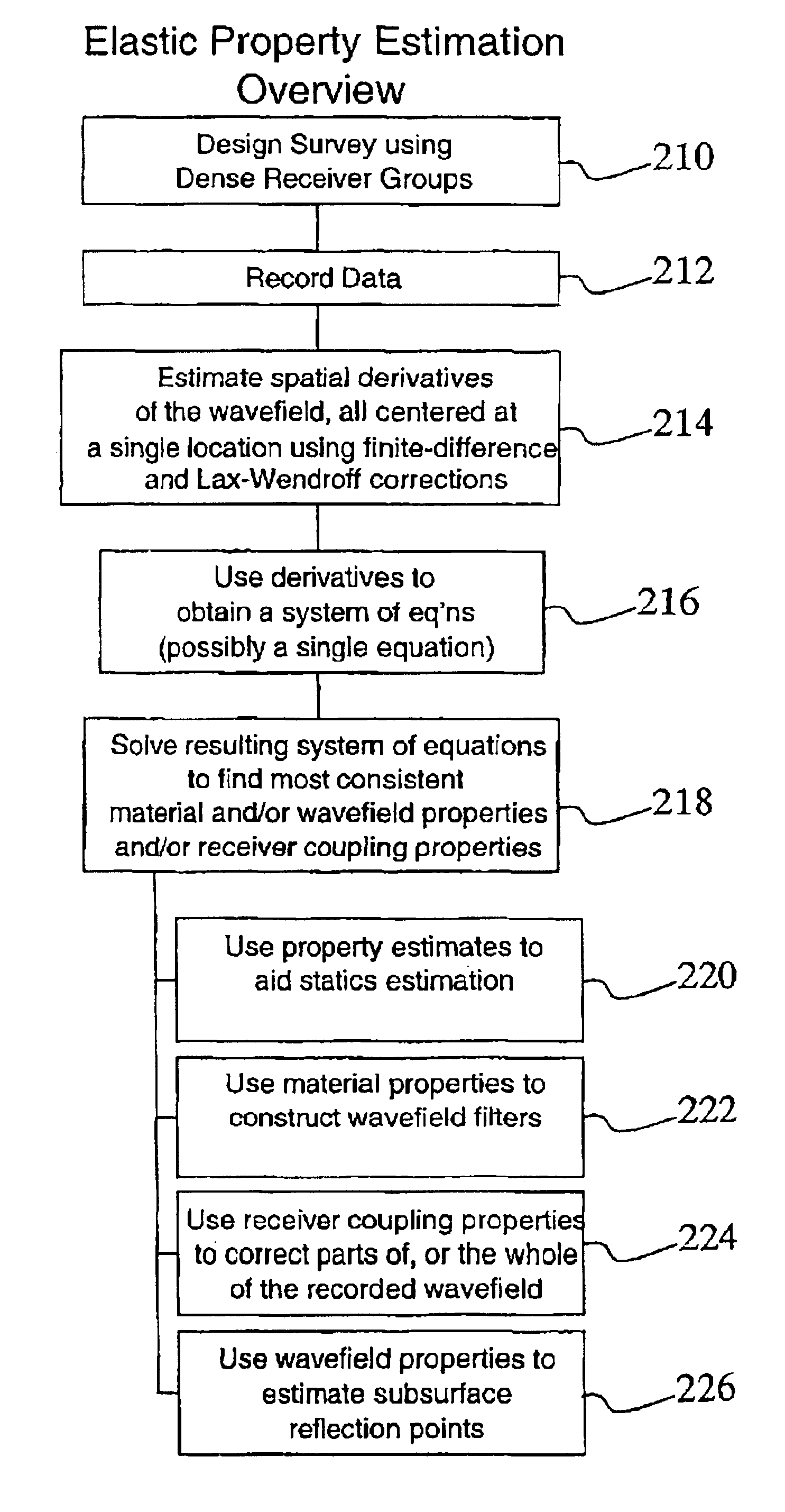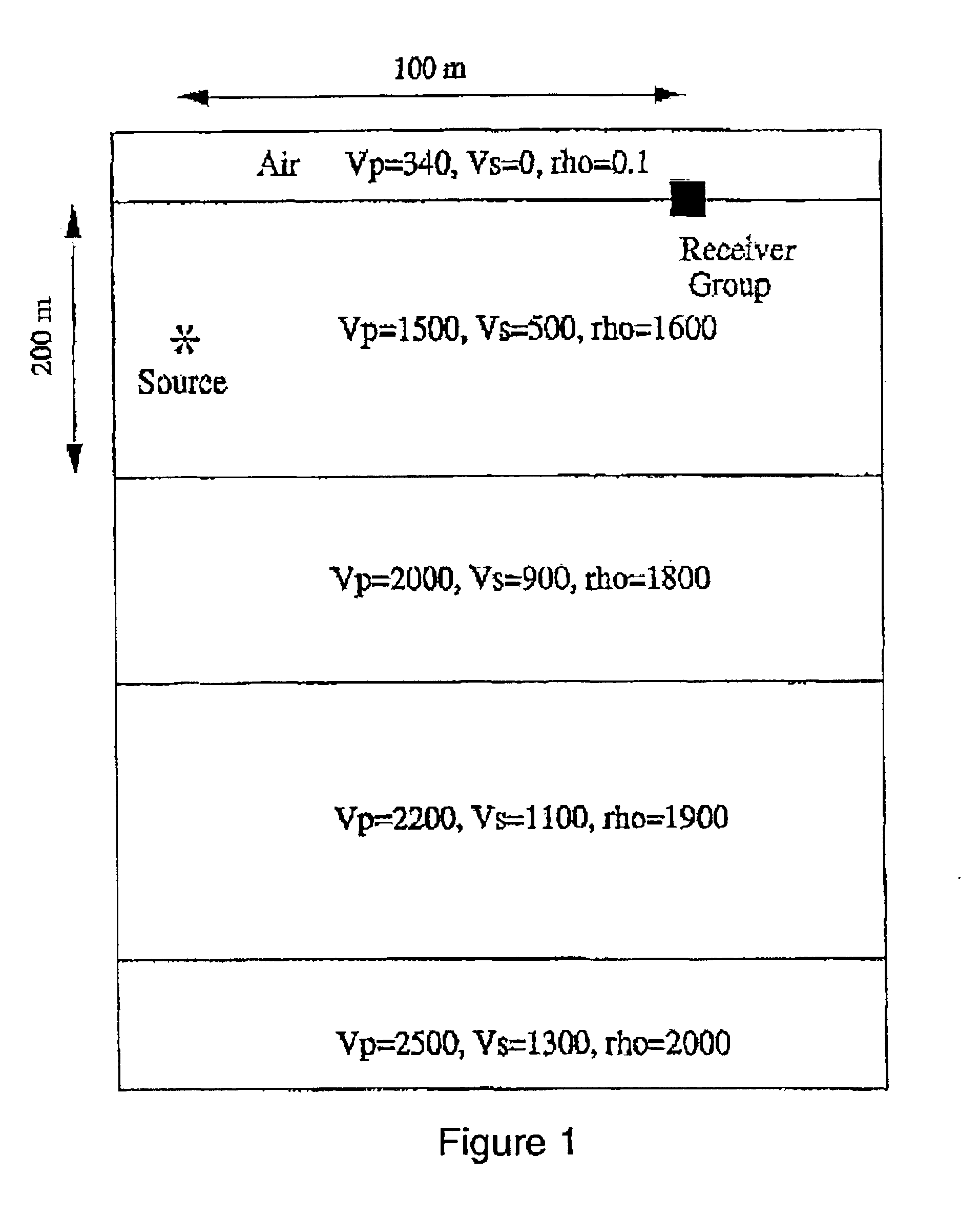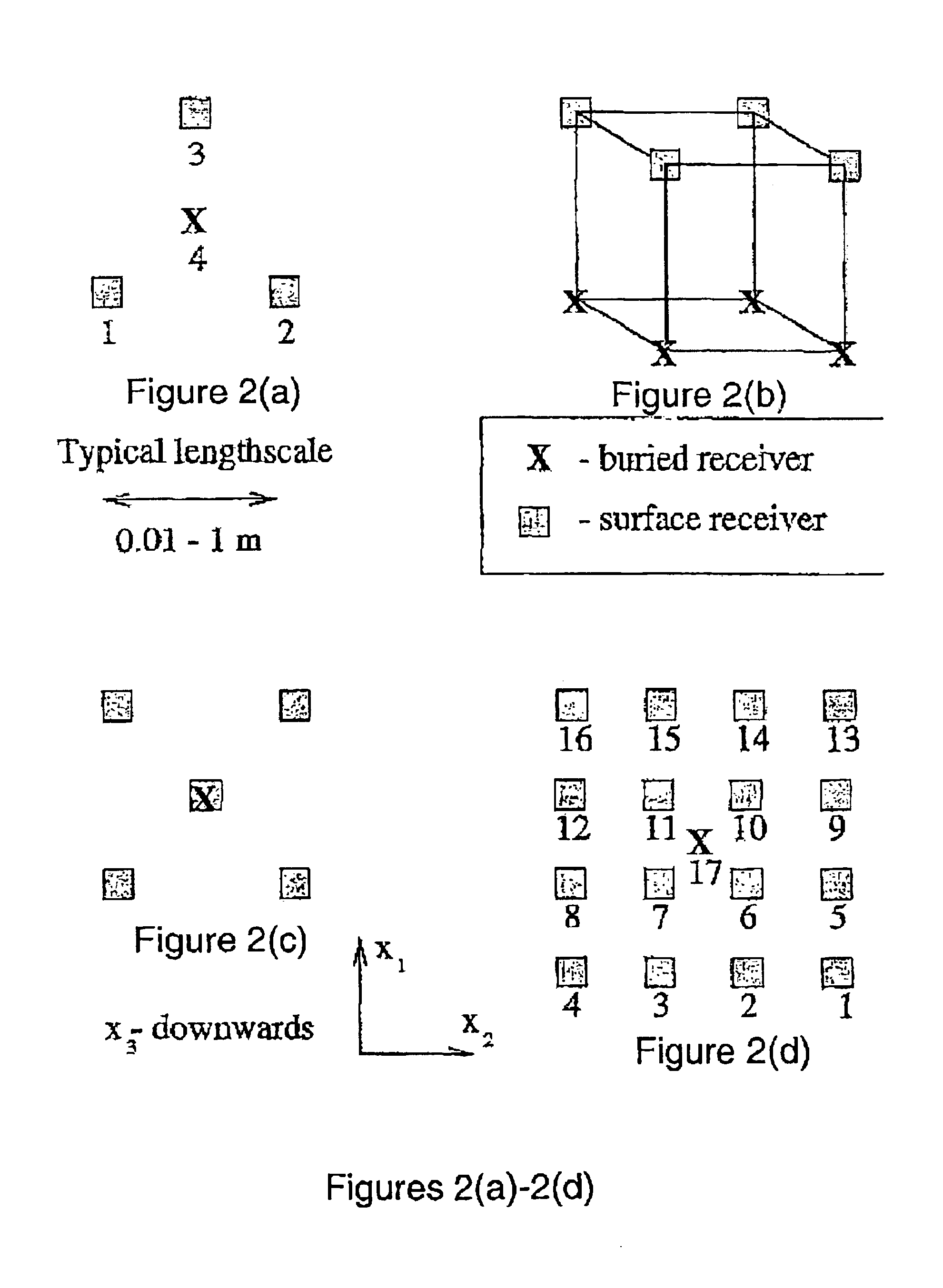System and method for estimating seismic material properties
a seismic material and property technology, applied in seismology for waterlogging, instruments, and reradiation, etc., can solve problems such as unpractical source receiver configuration, noise sensitivity, and non-unique solutions
- Summary
- Abstract
- Description
- Claims
- Application Information
AI Technical Summary
Benefits of technology
Problems solved by technology
Method used
Image
Examples
Embodiment Construction
[0018]Volumetric recording of the wavefield can be used to calculate and to invert spatial wavefield derivatives for P and S velocities in the Earth in the neighbourhood of a small, closely-spaced array of receivers. “Volumetric recording” refers to the fact that the array approximately encloses a volume of the Earth. This allows spatial derivatives of the wavefield in all directions to be calculated. The quantities estimated are the effective velocities of the P and S components of the wavefield at any point in time. Hence, these will vary with both wave type and wavelength. If estimated for the near surface Earth structure, such velocities may be useful for statics estimation, or for separation of the wavefield into up- and down-going components. For further detail on separation of the wavefield see UK Patent Application GB 2 333 364 A (published Jul. 21, 1999), and UK Patent Application entitled “System and Method for Seismic Wavefield Separation” (UK Patent Application No. 00034...
PUM
 Login to View More
Login to View More Abstract
Description
Claims
Application Information
 Login to View More
Login to View More - R&D
- Intellectual Property
- Life Sciences
- Materials
- Tech Scout
- Unparalleled Data Quality
- Higher Quality Content
- 60% Fewer Hallucinations
Browse by: Latest US Patents, China's latest patents, Technical Efficacy Thesaurus, Application Domain, Technology Topic, Popular Technical Reports.
© 2025 PatSnap. All rights reserved.Legal|Privacy policy|Modern Slavery Act Transparency Statement|Sitemap|About US| Contact US: help@patsnap.com



